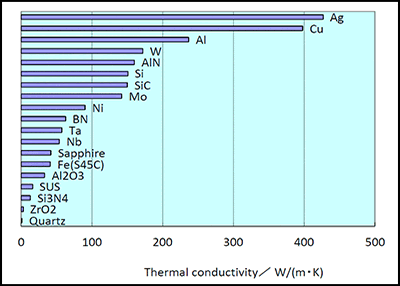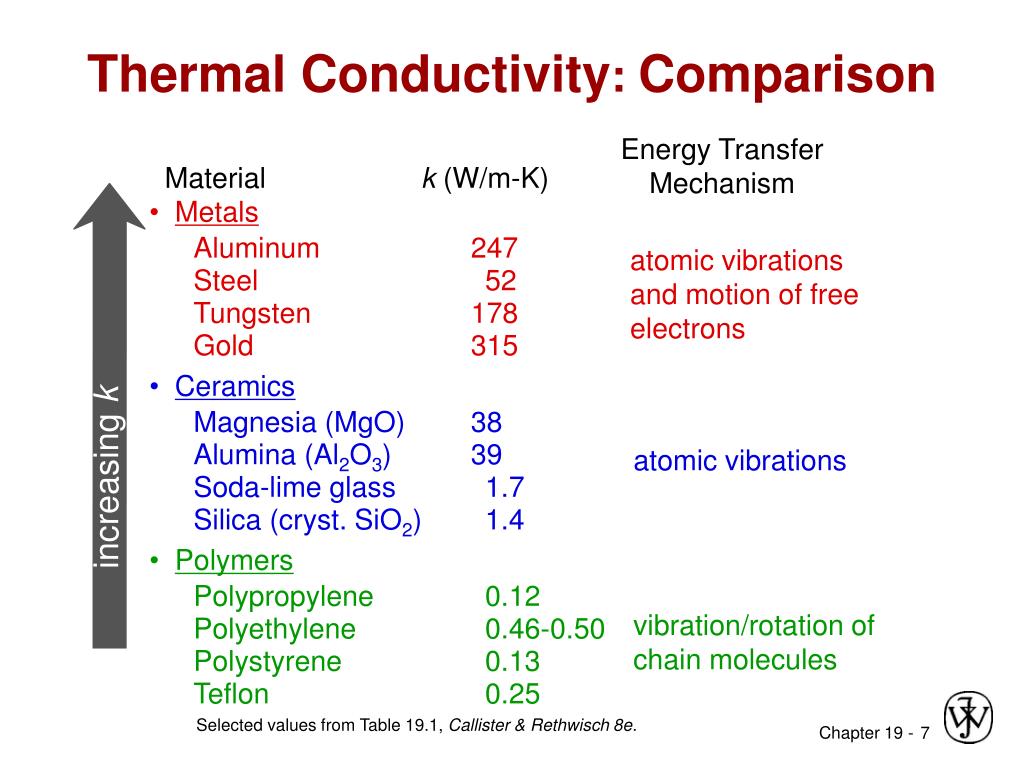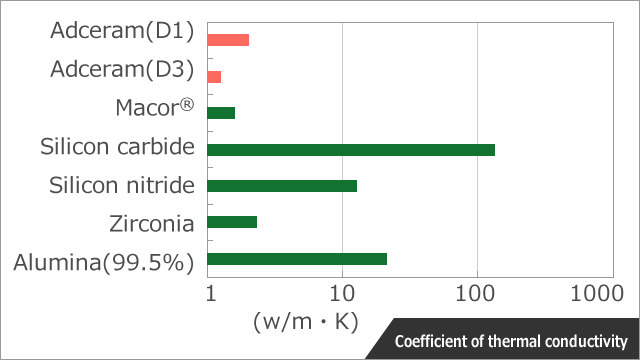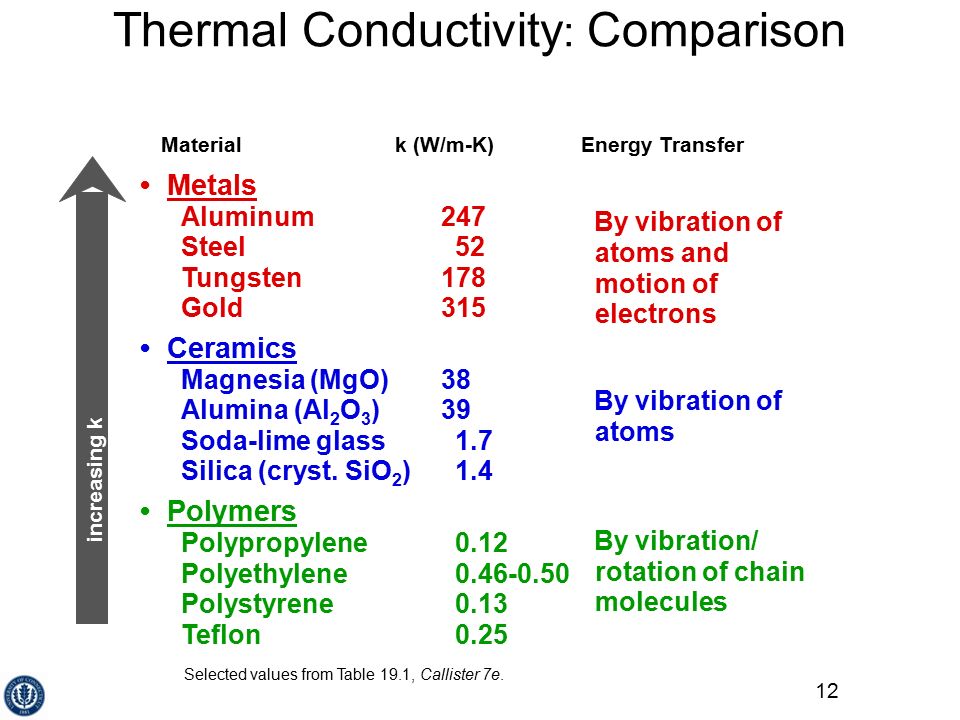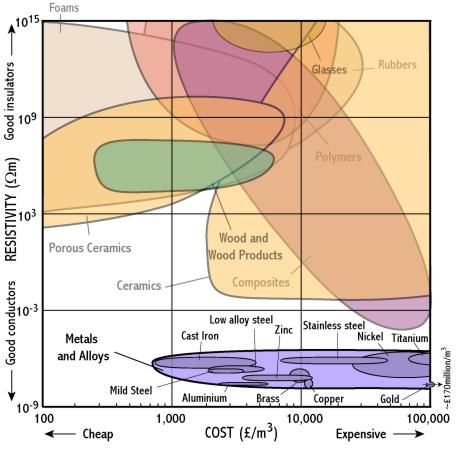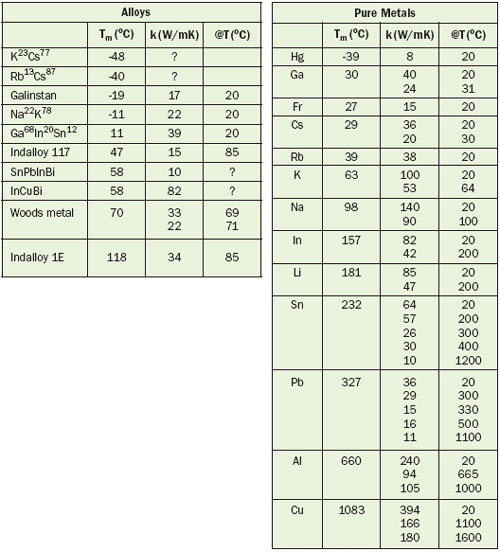Thermal conductivity is a material property that describes ability to conduct heat thermal conductivity can be defined as the quantity of heat transmitted through a unit thickness of a material in a direction normal to a surface of unit area due to a unit temperature gradient under steady state conditions.
Thermal conductivity table ceramic.
Metallic type of bonding ionic covalent.
An average thermal conductivity of 5 077 w mk was obtained for bisque fired alumina which is exactly within the accepted thermal conductivity range of 5 to 5 25 w mk for this material.
The thermal conductivity of a material is a measure of its ability to conduct heat.
The plate distance is one centimeter the special conductivity values were calculated from the lasance approximation formula in the thermal conductivity of air at reduced pressures and length scales and the primary values were taken from weast at the normal pressure tables in the crc handbook on page e2.
Good electrical conductivity poor insulator good thermal conductivity poor.
Ceramic materials with high thermal conductivity are of great interest in the thermal management of integrated electronic device packaging such as high power light emitting devices leds power semiconductor modules micro and nano fluidics thermoelectrics solar cells and wireless communication devices.
Yes crystalline yes free roaming valence electrons tied up in bonds.
Note that the wide variation in the values.
In component datasheets and tables.
The thermal conductivity and thermal resistivity values measured by the tls 100 are listed in table 1.
High tensile strength low.
Aluminum nitride has a very high thermal conductivity while being an electrical insulator.
Opaque optical properties transparent.
This makes it an ideal material for use in electrical and thermal management situations.
Exhaust system components with ceramic coatings having a low thermal conductivity reduce heating of nearby sensitive components.
Density ductility hardness corrosion resistance hardness thermal conductivity electrical conductivity wear resistance.
Low shear strength high.
Asked jul 25 2020.
Metals property ceramics.
In summary the published thermal conductivity values of ceramics are ideally suited to match experimental results to numerical simulations and i am afraid that this is exactly what.
Compare metals polymers and ceramics on a chart or table using the following properties and the ratings low high and highest.


